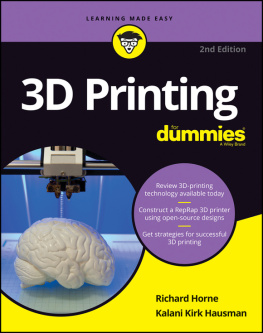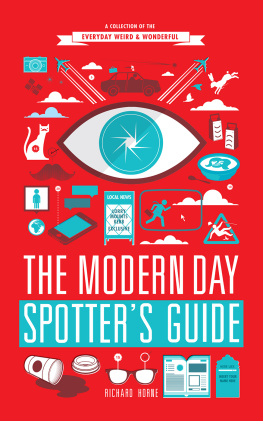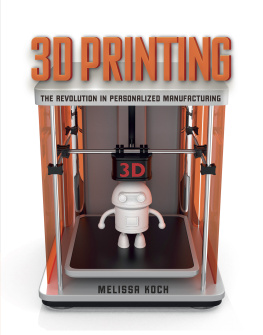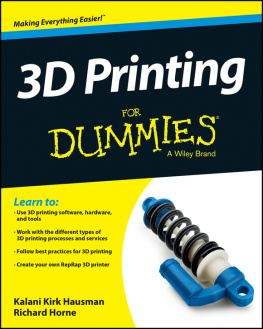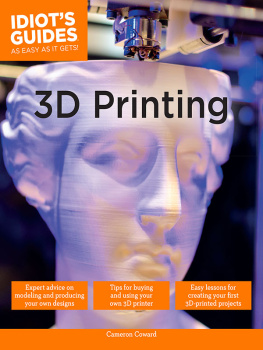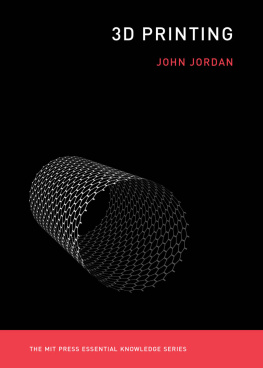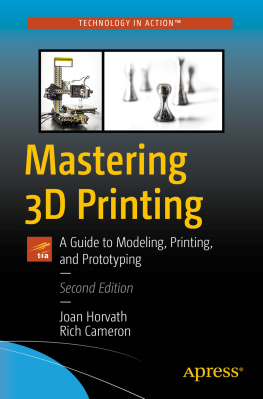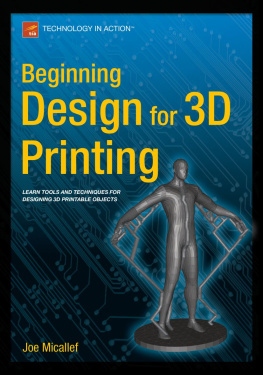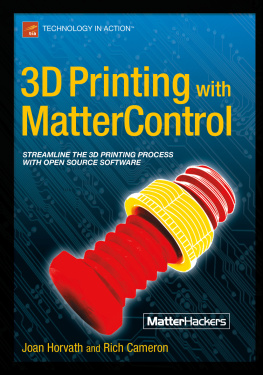
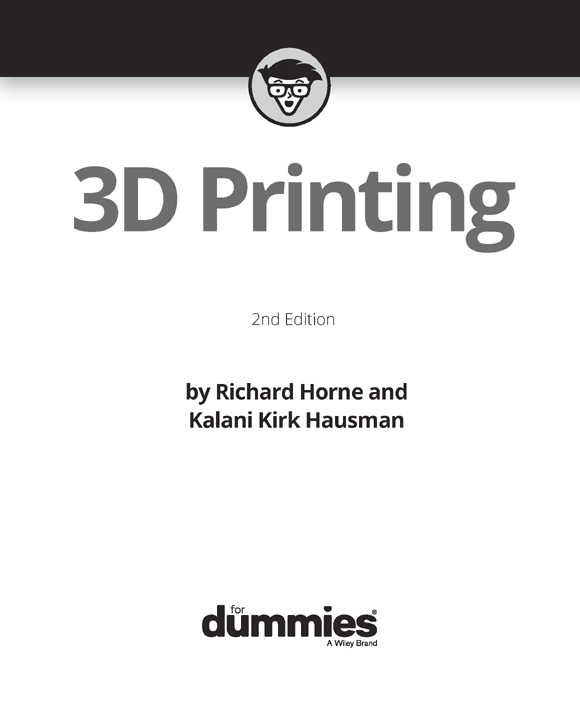
3D Printing For Dummies, 2nd Edition
Published by: John Wiley & Sons, Inc., 111 River Street, Hoboken, NJ 07030-5774, www.wiley.com
Copyright 2017 by John Wiley & Sons, Inc., Hoboken, New Jersey
Published simultaneously in Canada
No part of this publication may be reproduced, stored in a retrieval system or transmitted in any form or by any means, electronic, mechanical, photocopying, recording, scanning or otherwise, except as permitted under Sections 107 or 108 of the 1976 United States Copyright Act, without the prior written permission of the Publisher. Requests to the Publisher for permission should be addressed to the Permissions Department, John Wiley & Sons, Inc., 111 River Street, Hoboken, NJ 07030, (201) 748-6011, fax (201) 748-6008, or online at http://www.wiley.com/go/permissions .
Trademarks: Wiley, For Dummies, the Dummies Man logo, Dummies.com, Making Everything Easier, and related trade dress are trademarks or registered trademarks of John Wiley & Sons, Inc. and may not be used without written permission. All other trademarks are the property of their respective owners. John Wiley & Sons, Inc. is not associated with any product or vendor mentioned in this book.
LIMIT OF LIABILITY/DISCLAIMER OF WARRANTY: THE PUBLISHER AND THE AUTHOR MAKE NO REPRESENTATIONS OR WARRANTIES WITH RESPECT TO THE ACCURACY OR COMPLETENESS OF THE CONTENTS OF THIS WORK AND SPECIFICALLY DISCLAIM ALL WARRANTIES, INCLUDING WITHOUT LIMITATION WARRANTIES OF FITNESS FOR A PARTICULAR PURPOSE. NO WARRANTY MAY BE CREATED OR EXTENDED BY SALES OR PROMOTIONAL MATERIALS. THE ADVICE AND STRATEGIES CONTAINED HEREIN MAY NOT BE SUITABLE FOR EVERY SITUATION. THIS WORK IS SOLD WITH THE UNDERSTANDING THAT THE PUBLISHER IS NOT ENGAGED IN RENDERING LEGAL, ACCOUNTING, OR OTHER PROFESSIONAL SERVICES. IF PROFESSIONAL ASSISTANCE IS REQUIRED, THE SERVICES OF A COMPETENT PROFESSIONAL PERSON SHOULD BE SOUGHT. NEITHER THE PUBLISHER NOR THE AUTHOR SHALL BE LIABLE FOR DAMAGES ARISING HEREFROM. THE FACT THAT AN ORGANIZATION OR WEBSITE IS REFERRED TO IN THIS WORK AS A CITATION AND/OR A POTENTIAL SOURCE OF FURTHER INFORMATION DOES NOT MEAN THAT THE AUTHOR OR THE PUBLISHER ENDORSES THE INFORMATION THE ORGANIZATION OR WEBSITE MAY PROVIDE OR RECOMMENDATIONS IT MAY MAKE. FURTHER, READERS SHOULD BE AWARE THAT INTERNET WEBSITES LISTED IN THIS WORK MAY HAVE CHANGED OR DISAPPEARED BETWEEN WHEN THIS WORK WAS WRITTEN AND WHEN IT IS READ.
For general information on our other products and services, please contact our Customer Care Department within the U.S. at 877-762-2974, outside the U.S. at 317-572-3993, or fax 317-572-4002. For technical support, please visit https://hub.wiley.com/community/support/dummies .
Wiley publishes in a variety of print and electronic formats and by print-on-demand. Some material included with standard print versions of this book may not be included in e-books or in print-on-demand. If this book refers to media such as a CD or DVD that is not included in the version you purchased, you may download this material at http://booksupport.wiley.com . For more information about Wiley products, visit www.wiley.com .
Library of Congress Control Number: 2017938751
ISBN: 978-1-119-38631-5 (pbk); 978-1-119-38632-2 (ebk); 978-1-119-38630-8 (ebk)
3D Printing For Dummies
To view this book's Cheat Sheet, simply go to www.dummies.com and search for 3D Printing For Dummies Cheat Sheet in the Search box.
- Table of Contents
Guide
Pages
Introduction
3D printing has been around for more than 30 years. Recently, the core technology for 3D printers has become available at prices many individuals and smaller companies can afford.
Three key things make 3D printing stand out from almost any other manufacturing process:
- Printed parts are grown in layers. Many complex objects that have internal structures or comprised of subassemblies can be manufactured in a single run, whereas previously, they could not be made by traditional means. This process often improves the performance of the finished part.
- Material is added rather than subtracted. This method of manufacturing adds raw materials to build an object rather than removing material. Machining away 90 percent of a metal block to make a cooling system for a race car is far less efficient than adding the 10 percent or so of metal powder needed to make a more compact and efficient design that couldnt have been machined in the first place.
- 3D printing often eliminates the need for complex or expensive production tooling. This benefit is becoming significant as 3D printers are being used for mass manufacturing runs in which individual tooling or hand-crafting would make customized products far too expensive (such as solid gold jewelry).
In short, 3D printing turns a digital model in a computer data file into a physical representation of the object or product. The term 3D printing is actually disliked in the wider industry, as its a poor representation of what this technology can achieve. A more professional name is additive manufacturing, which covers a vast array of sectors, materials, and processes used to produce physical objects from data.
Since the first edition of this book was released in 2013, desktop 3D printing and various forms of industrial additive manufacturing have been through the rise and fall of a technology hype cycle. Reports about 3D printing applied to biomedical research anticipated the leap from lab to patient too soon, rather than focusing on the possibility of printing tissue samples for medical research. Researchers and individuals are still working out appropriate uses of 3D-printing technology. There are often still vastly better ways to produce many things without 3D printing.
Much of the media hype surrounding 3D printing was exactly that: hype. But the end of the hype cycle is near, and 3D printing is stronger than ever. Some 3D-printing equipment vendors realize that not everyone needs or wants a home 3D printer. The desktop 3D-printing market has returned its focus to people who need and want to explore this technology.
About This Book
3D Printing For Dummies, 2nd Edition, was written with the average reader in mind. Its a survey of the existing capabilities of additive manufacturing for both private and commercial purposes and a consideration of the possibilities of its future.
In this book, we review many current additive manufacturing technologies. Some are early uses of a technology or process with numerous limitations and caveats regarding their use. We also explore the process by which you can build your own 3D printer, using the open-source self-replicating rapid-prototyper (RepRap) family of designs. This book wont make you an expert in all aspects of 3D printing, but it will give you an opportunity to explore additive manufacturing systems. We hope that youll be excited by the amazing potential of 3D printers excited enough to build your own printer and start sharing your creativity with friends and family!
As we updated this book for the second edition, we were pleased by the number of times we could change a statement from something like NASA is planning to take 3D printers into space to NASA has now successfully tested and 3D-printed spare parts in space.
Foolish Assumptions
Next page
